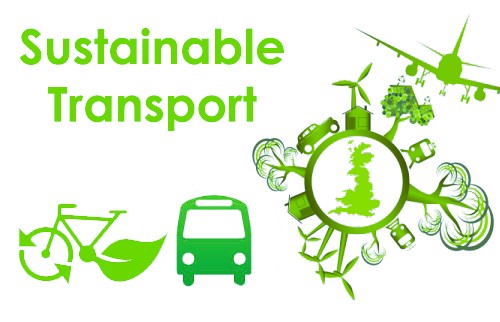Introduction:
Chhath Puja, also known as Surya Shashti, is a vibrant and deeply spiritual festival celebrated predominantly in the Indian states of Bihar, Jharkhand, Eastern Uttar Pradesh, and some parts of Nepal. This ancient Hindu festival, dedicated to the worship of the sun god, is a unique blend of rituals, devotion, and community spirit.
Historical and Cultural Significance:
Chhath Puja finds its roots in ancient scriptures and is believed to date back to the Vedic period. The festival holds great historical and cultural significance, symbolizing gratitude to the sun for sustaining life on Earth. It is celebrated on the sixth day after Diwali, usually in October or November.
Chhath Puja Muhurat For 2023 New Delhi, India
शुक्रवार, 17 नवंबर 2023 पहला दिन नहाय-खाय
शनिवार, 18 नवंबर 2023 दूसरा दिन खरना
रविवार, 19 नवंबर 2023 तीसरा दिनसंध्या अर्घ्य
सोमवार, 20 नवंबर 2023 चौथा दिन उषा अर्घ्य
Chhath Puja Muhurat For 2024 New Delhi, India
7 November (Sandhya Arghya) Sunset time : 17:31:29
8 November (Usha Arghya) Sunrise time :06:38:38
Rituals and Celebrations:
Nahay Khay (First Day):
The festival begins with devotees taking a holy dip in rivers, ponds, or other water bodies. This means that after bathing, the house is cleaned and vegetarian food is eaten to protect the mind from the vengeful tendency. They prepare a special meal known as ‘Kaddu-Bhat’ and eat only once during the day.
Lohanda and Kharna (Second Day):
Kharna is the second day of Chhath Puja. Kharna means the fast of the whole day. On this day, the devotees are not allowed to drink even a single drop of water. In the evening, gur ki kheer(jaggery kheer), typically kheer (rice pudding) fruits and chapati full of ghee prasad is offered to the sun god and fast breaking only in the evening after sunset.
Sandhya Arghya (Third Day):
On the third day of Chhath puja, an arghya is offered to the sun god during the Kartik Shukla Shashthi. Devotees gather at the riverbanks or other water bodies during the evening, offering ‘Arghya’ (offerings) to the setting sun. This ritual is performed with deep reverence and gratitude. In the evening, a bamboo basket is decorated with fruits, thekua and rice laddus, after which devotees offer an arghya to the sun with their families. At the time of Arghya, water and milk is offered to Sun God and the Chhathi Maiya is worshiped from a soop filled with prasad. After the worship of Sun God, Shashthi Devi songs are sung in the night and the vrat katha is heard.
Usha Arghya (Fourth Day): The final day involves offering Arghya to the rising sun. In the morning, an arghya is offered to the Sun God. On this day, before sunrise, the devotees have to go to the riverbank to offer an arghya to the rising sun. Devotees assemble before dawn, expressing their devotion and seeking blessings for their families and loved ones. After this, the protection of the child from Chhathi maiya and the happiness of the entire family is sought for peace. After worship, devotees drink sharbat and raw milk, and eat a little prasad in order to break one’s fast which is called Paran or Parana.
Significance of Sun Worship:
The sun, in Hindu mythology, is considered a symbol of life, energy, and healing. Chhath Puja is a way of expressing gratitude to the sun for sustaining life on Earth and promoting well-being. The rituals associated with the festival are believed to purify the mind and soul, fostering spiritual growth.
Chhath Puja, also known as Sun Shashthi is celebrated on Kartik Shukla Shashthi. This festival is celebrated after 6 days of Diwali and mainly celebrated in the states of Uttar Pradesh, Bihar and Jharkhand with great fanfare. On Chhath Puja, worshiping Sun God and Chhathi maiya helps you gain health, wealth and happiness. In the last few years, Chhath Pooja has got a special significance as a folk festival. This is the reason why the festival is celebrated with great pomp and show.
Significance of Chhath Puja & Chhathi Maiya
The Chhath Puja is dedicated to the Sun God. The sun is the god visible to every being, is the basis of life of all creatures on earth. Along with the Sun God, Chhathi Maiya is also worshipped on this day. According to Vedic Astrology, Chhathi maiya or Chhathi mata protects the offspring and provides longevity to them.
In the Hindu religion, the Shashthi Devi has also been known as Manas Daughter of Brahma ji. In the Puranas, she is also said to be the mother Katyayani, who is worshiped on Navratri on the Shashti date. Shashthi Devi is said to be Chhath Maiya in the local language of Bihar-Jharkhand.
The Festival of Chhath Puja
Chhath Puja is a folk festival that lasted four days. This is a four-day festival, which starts with Kartik Shukla Chaturthi and ends with Kartik Shukla Saptami.
Chhath Puja Vidhi
Get all the samagri before the Chhath puja and offer an arghya to Sun God:
● 3 large bamboo baskets, 3 soop made of bamboo or brass, plate, milk and glass
● Rice, red vermilion, lamp, coconut, turmeric, sugarcane, suthani, vegetable and sweet potato
● Pear, big lemons, honey, paan, whole herd, caravans, camphor, sandalwood and dessert
● As prasad, take thekua, malpua, kheer-puri, semolina pudding, rice ladoos.
Chhath Puja Arghya Vidhi
Place the above Chhath puja samagri in the bamboo basket. Put the whole prasad in soop and burn the lamp in the soop. Then, all the women stand in knee deep water with traditional soop in their hands to offer an arghya to the sun.
Legend Associated with Chhath Puja
The Chhathi Maiya is worshiped on the Chhath festival, which is also mentioned in the Brahma Vaivarta Purana. According to a legend, King Priyavrat, son of First Manu Swayambhu, had no children. Because of this, he used to be very sad. Maharishi Kashyap asked him to do a yajna. According to Maharishis orders, he performed a yajna for a son. After this, Queen Malini gave birth to a son but unfortunately the baby was born dead. King and other family members were very sad because of this. Only then a craft seen in the sky, where Mata Shashthi was sitting. When the king prayed to her, then she introduced herself and said that – I am the manas daughter of Lord Brahma, Shashthi Devi. I protect all the children of the world and give the blessings of children to all childless parents.
After this, Goddess blessed the lifeless child with her hands, so that he was alive. The king was very pleased with the grace of Goddess and he worshiped the goddess Shashthi Devi. It is believed that after this puja, this festival is celebrated worldwide.
Religious and Cultural Significance of Chhath Puja
Chhath Puja is a festival of religious and cultural importance. This is the only festival in which Sun god is worshipped and offered an arghya. The worship of the sun in Hindu religion is of great importance. He is the only God whom we can see on a regular basis. In the Vedas, the Sun God is called the soul of the world. The light of the sun has an ability to destroy many diseases. With the auspicious effect of the sun, the person gets health, wealth and self-confidence. In Vedic astrology, the sun is said to be the factor of soul, father, ancestor, respect and high government services. On the Chhath Puja, worship of Sun god and Shashti Maiya is achieved for a person, children, pleasure and desire. Culturally, the main feature of this festival is the simplicity of tradition, love for purity and nature.
Significance of Chhath Puja the Astrological Way
The Chhath festival is of great importance even as per scientific and astrological point of view. The sixth tithi of the Kartik Shukla Paksha is a special astronomical occasion, when the sun is situated in the southern hemisphere of the earth. During this time, ultraviolet rays of the sun collect more than the normal amount on the earth. The direct effect of these harmful rays falls on peoples eyes, stomach and skin. The worship and offering an arghya to the sun on the Chhath puja should not harm the person with ultraviolet rays, hence the importance of Sun worship increases.
Community Spirit:
Chhath Puja is not only a personal and family-oriented celebration but also a community event. Devotees come together, sharing the joy of devotion, assisting each other in the performance of rituals, and creating a strong sense of community.
Conclusion:
Chhath Puja stands as a testament to the rich cultural and religious tapestry of India. Beyond its religious aspects, the festival promotes environmental consciousness, as the rituals involve a deep connection with nature and water bodies. It is a celebration that beautifully blends tradition, spirituality, and community, providing a glimpse into the profound cultural heritage of the regions where it is observed.
We hope you liked this article based on Chhath Puja.
NewzQuest wishes all our readers a happy Chhath Puja!
@newzque
Like this:
Like Loading...







